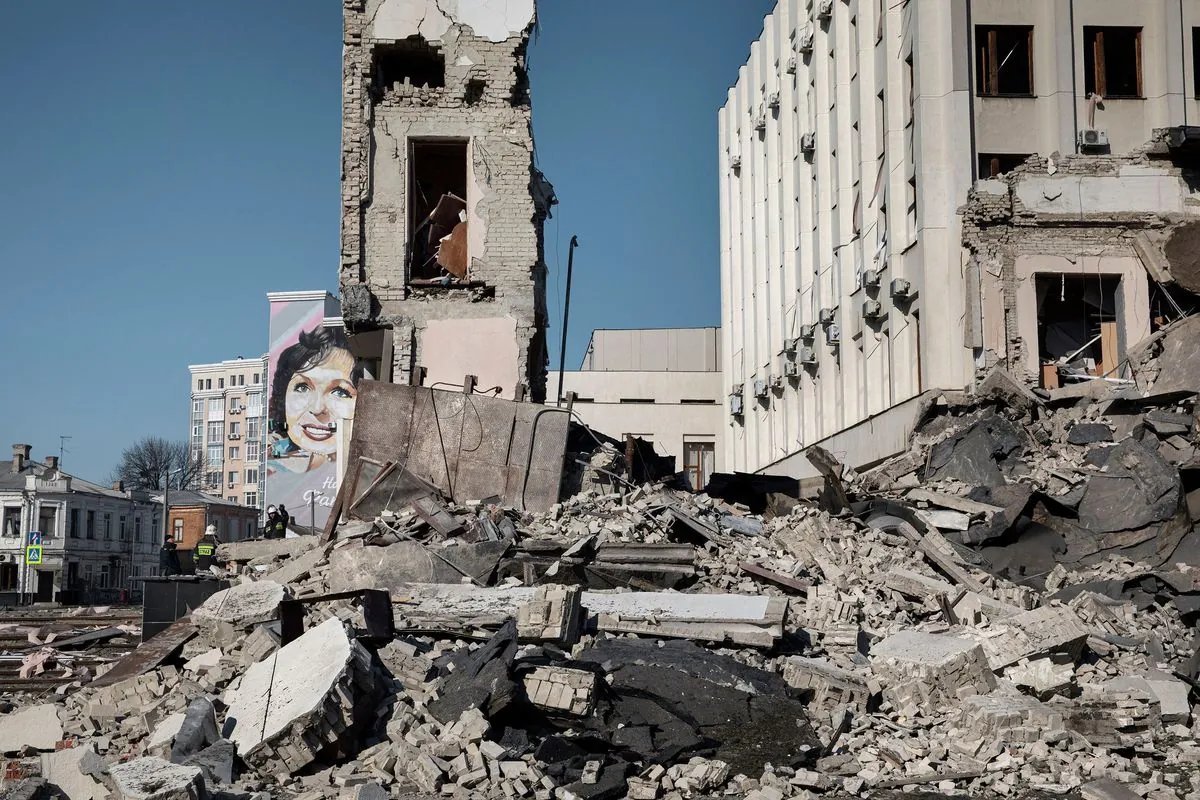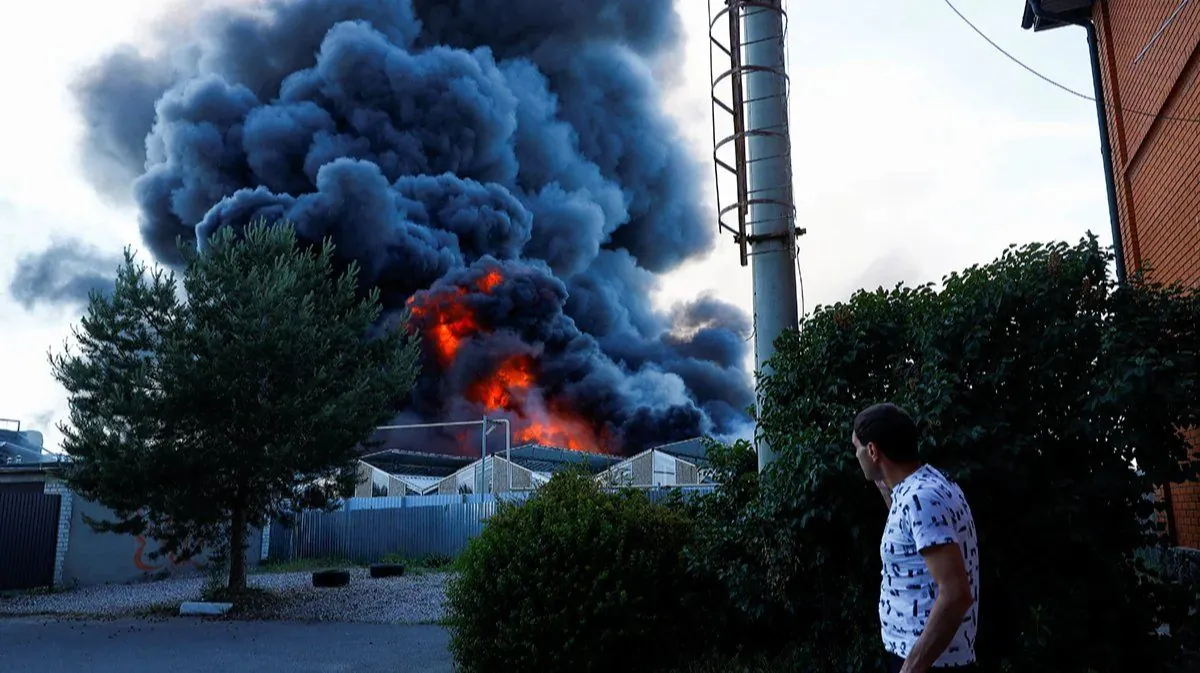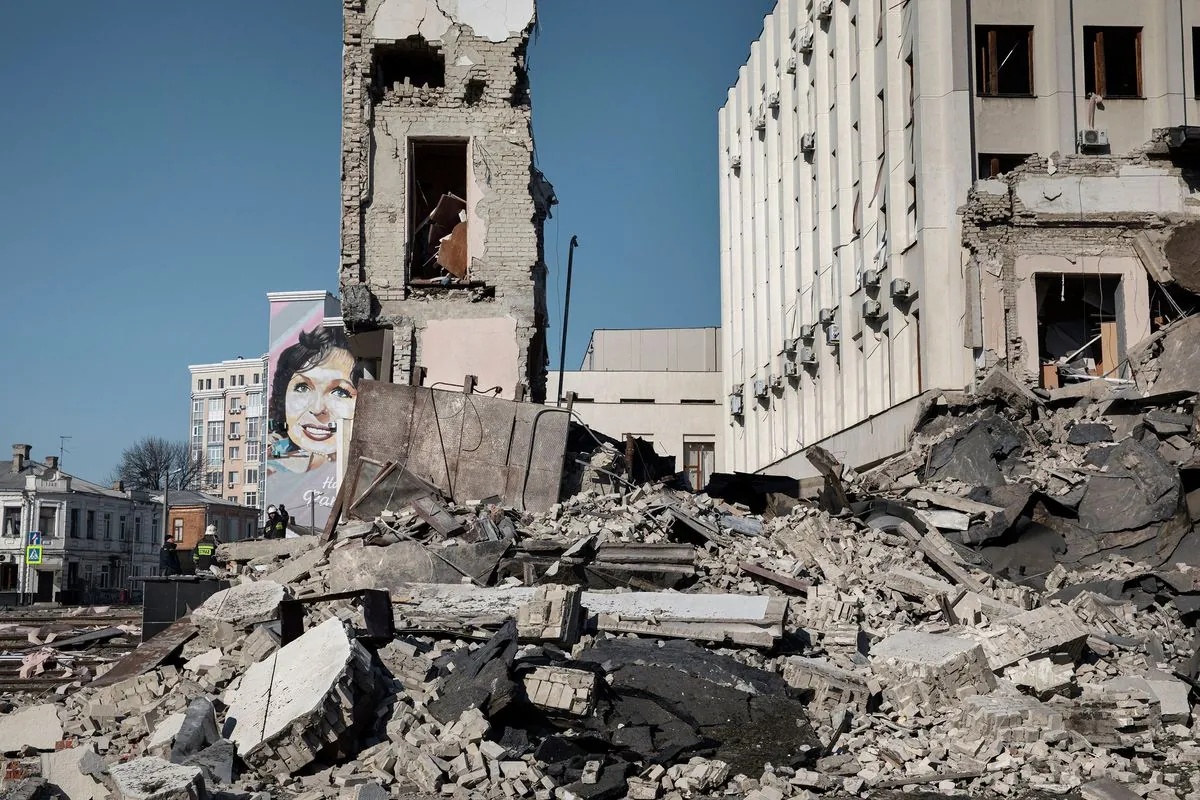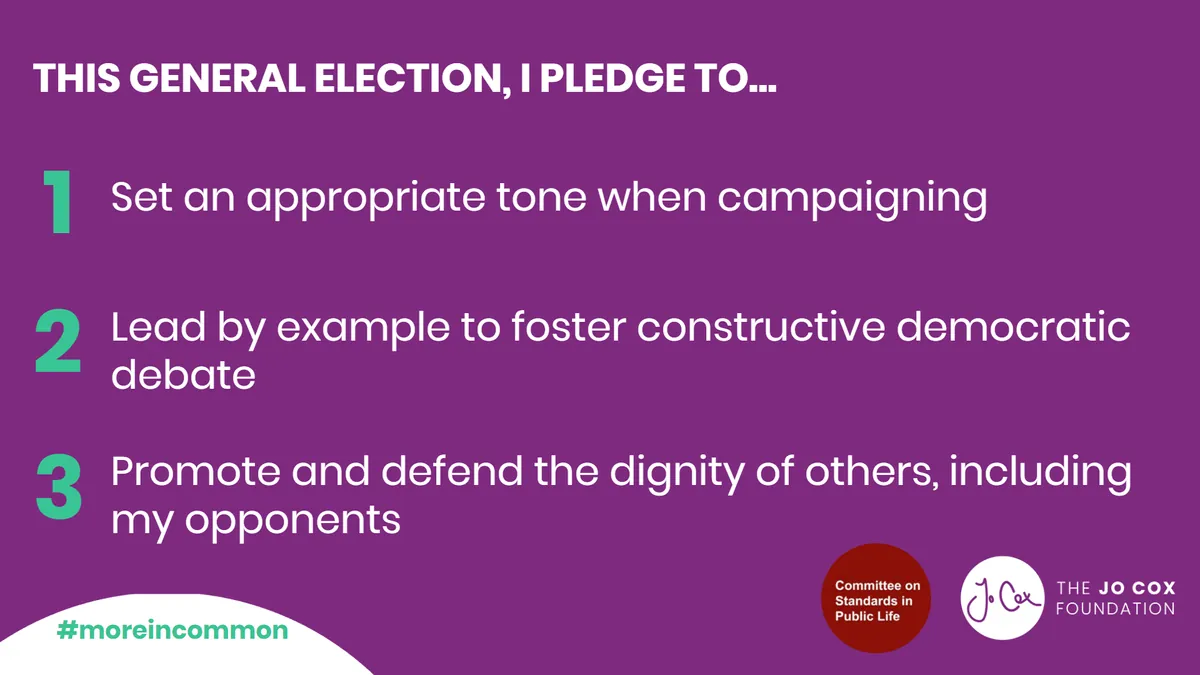Russia Intensifies Attacks on Ukraine with Glide Bombs and Drones
Russia escalates its offensive on Ukraine, deploying over 900 glide bombs in a week. President Zelensky seeks advanced long-range missiles from Western allies as civilian casualties mount in Kharkiv and other cities.

In a significant escalation of the ongoing conflict, Russia has intensified its attacks on Ukraine, employing a devastating array of weaponry. According to Volodymyr Zelensky, the Ukrainian President, Russia has unleashed more than 900 glide bombs, 400 Shahed drones, and nearly 30 missiles on Ukrainian territory within the past week.
The northeastern city of Kharkiv, Ukraine's second-largest urban center, has borne the brunt of these assaults. On September 20, 2024, a barrage injured at least 15 individuals, including children. The following day, bombs struck apartment buildings, wounding 21 people, among them an eight-year-old child. Ukrainian officials have identified the use of KAB-type aerial glide bombs in these attacks, weapons that have been causing extensive destruction in eastern Ukraine.

Glide bombs, unpowered weapons utilizing wings for extended range and accuracy, have presented a significant challenge for Ukrainian forces. These munitions, weighing up to 3,300 pounds, are created by retrofitting old Soviet bombs with fold-out wings and satellite navigation systems. The retrofitting of outdated weapons with modern technology is a common practice in military modernization efforts.
Zelensky reported that in March 2024 alone, 3,000 glide bombs struck targets in Ukraine. The devastating impact of these weapons was starkly described by Vovchansk police chief Oleksii Kharkivsky in May 2024: "There are no words to describe the aftermath of a glide bomb attack. You arrive to see people who are lying there, torn apart."
In response to this threat, Ukraine has repeatedly called for the ability to use Western-supplied long-range missiles against targets within Russian territory. Currently, neither the United Kingdom nor the United States has granted permission for the use of ATACMS or Storm Shadow missiles on Russian soil. These advanced missile systems, developed by the US and jointly by France and the UK respectively, could potentially alter the balance of power in the conflict.
Zelensky plans to discuss this critical issue with US President Joe Biden and both US presidential candidates, Kamala Harris and Donald Trump, on the sidelines of the upcoming UN General Assembly. The Ukrainian leader emphasized the importance of these talks, stating, "There will be a new president in the United States. And we need to talk to each of the candidates about their perception of this."
The recent attacks have not been limited to Kharkiv. In Nikopol, a city in Dnipropetrovsk Oblast situated on the Dnieper River, a Russian drone strike on a passenger car resulted in the deaths of a 12-year-old girl and a woman. Two others, including a four-year-old child, were wounded in the attack.
Ukraine continues to defend against these assaults. The Ukrainian air force reported that overnight on September 22, 2024, Russia launched 80 Shahed drones and two missiles. Ukrainian air defenses successfully intercepted 71 drones, while electronic warfare countermeasures neutralized an additional six. This demonstrates the ongoing importance of air defense systems and electronic warfare in modern conflicts.
As the conflict persists, the international community watches closely. The upcoming discussions at the UN General Assembly, where world leaders traditionally gather each September in New York City, may prove crucial in determining the future course of Western support for Ukraine.
"We need to strengthen our capabilities to better protect lives and ensure safety. Ukraine needs full long-range capabilities, and we are working to convince our partners of this. We will continue these discussions next week."


































